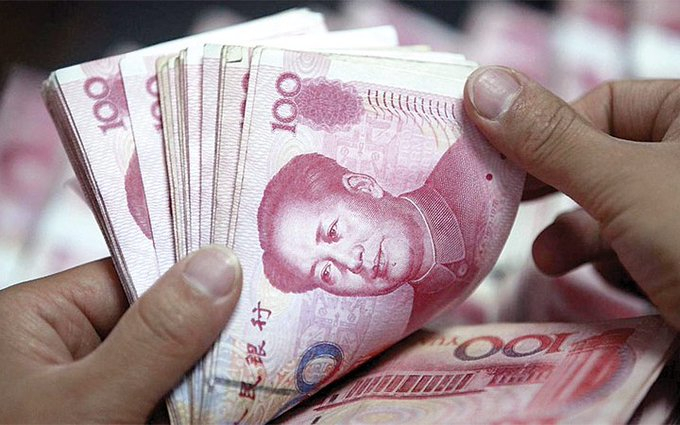China cut its benchmark lending rate as expected on Monday to reduce borrowing costs for companies and prop up the coronavirus-hit economy, after it contracted for the first time in decades.
The one-year loan prime rate (LPR) CNYLPR1Y=CFXS was lowered by 20 basis points (bps) to 3.85% from 4.05% previously, while the five-year LPR CNYLPR5Y=CFXS was cut by 10 bps to 4.65% from 4.75%.
The move was the second cut to the lending benchmark rate this year, and the latest reduction in one of China's key lending rates. Most new and outstanding loans are based on the LPR, while the five-year rate influences the pricing of mortgages.
All 52 participants in a Reuters survey had expected a reduction in the LPR at its monthly fixing. Most had forecast a 20 bps cut in the one-year rate but a more modest 5-10 bps in the five-year as Beijing tries to keep a lid on property prices.

China economy
"The asymmetric cut suggests that the authorities will stick to the tight housing policy. It will not be deemed as a tool to stimulate domestic demand, even at this difficult time," said Xing Zhaopeng, markets economist at ANZ in Shanghai.
The Chinese economy shrank 6.8% in the first quarter from a year earlier as the virus and tough containment measures shut down factories and shops and put millions out of work, data showed on Friday. That was the first contraction since at least 1992, when quarterly records were first published.
While the country is restarting its economic engines, analysts say activity could take months to return to pre-crisis levels, with the likelihood of a global recession adding to the pressure.
Jacqueline Rong, senior China economist at BNP Paribas in Beijing, said the marginal cuts to the 5-year LPR could be interpreted as "counter-cyclical relaxation" in the housing sector.
"Undoubtedly, the property sector has been the biggest driver of the economy, contributing more than exports to broad economic growth. Given the fact that the economy is facing such big downward pressure, even if there's no epidemic this year, we expect to see some reasonable counter-cyclical relaxation in the housing sector."
The cut to the lending benchmark rate had been expected after the People's Bank of China (PBOC) lowered the interest rate on its medium-term lending facility (MLF) for financial institutions to the lowest on record last week. That gauge serves as the guide to the LPR. The interest rate on one-year MLF CNMLF1YRRP=PBOC now stands at 2.95%.
Global central banks have rolled out unprecedented stimulus measures in recent weeks to mitigate the economic fallout from pandemic locksdowns and to keep cash-starved companies and consumers afloat.
The PBOC has stepped up policy easing since the outbreak intensified in mid-January, while the government has announced a host of fiscal measures from cheap loans to tax cuts and special bonds to fund infrastructure projects.
But the Chinese central bank's response to the crisis so far has been less aggressive than many of its global peers and more restrained than the massive stimulus it deployed during the global financial crisis.
Analysts believe more aggressive stimulus is unlikely at this point, however, given policymakers' concerns about a rapid rise in debt and risks to the financial system.
"After that, the PBOC may need to rely more on RRR cuts than rate cuts. The PBOC may use RRR cuts more than rate cuts before September to delay its policy rates touching ultra-low levels," said Iris Pang, Greater China economist at ING.
The LPR is a lending reference rate set monthly by 18 banks. The People's Bank of China revamped the mechanism to price LPR in August 2019, loosely pegging it to the medium-term lending facility rate (MLF)








